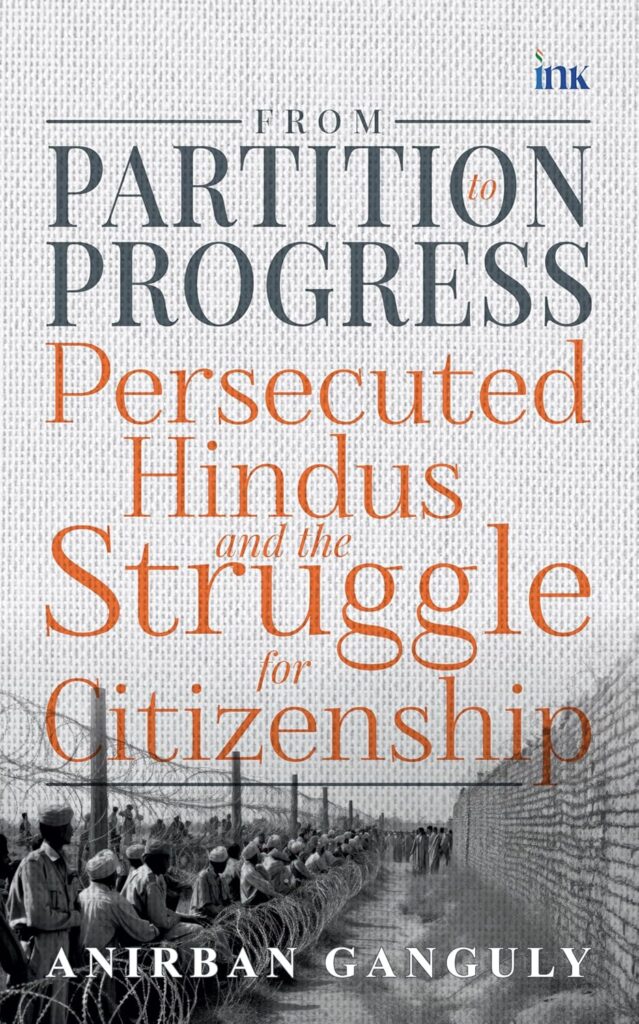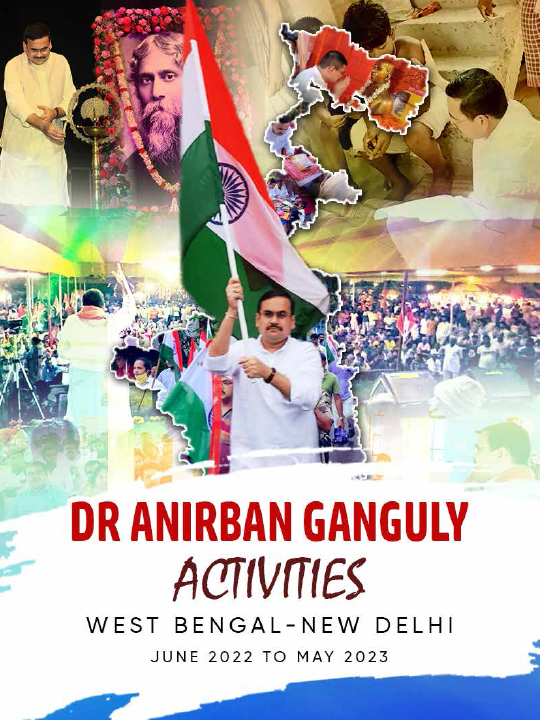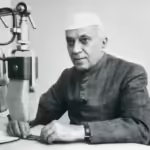Bengal Revolutionaries and Doctorji
- By : Anirban Ganguly
- Category : Articles

Credible records and memoirs uncover the deeply sophisticated yet organic link between Hedgewar and Bengal’s revolutionary nationalists including Subhash Chandra Bose—putting a spotlight on their shared roots in anti-colonial struggle
Let us continue with the memoirs of freedom fighter Jogesh Chatterjee in our effort to retrace the link between Dr Hedgewar, some of the principal founding ideals of the RSS and the revolutionary nationalists of Bengal.
Chatterjee reminiscences that in the summer of 1939, as war clouds were gathering across Europe and the western hemisphere, he and Trailokya Nath Chakravarty (1889-1970) “Maharaj”, one of the doyens of revolutionary nationalism in India and iconic mentor to a number of revolutionaries in India, visited Dr Hedgewar ‘the founder of the R.S.S’ at Nagpur on their way back from Wardha.
From Chatterjee’s account of this visit we are told that Dr Hedgewar, under Trailokya Nath Chakravarty, used to work “as a member of the secret Anushilan Samiti when he was a student in the Calcutta National Medical College.” An interesting conversation ensued during this visit to Nagpur between these two stellar and stalwart revolutionaries of Bengal and Doctorji.
Dr Hedgewar said, records Chatterjee, “that he gave physical training to youths without any designed political objective, because in that case the work of the organisation could not be carried on. But if during the war period we could do anything then their men, about 44,000 in number at that time, he thought, would be helpful to us…” Dr Hedgewar, noted Chatterjee, passed away in the next summer and during the August Movement of 1942, individuals from his organisation participated in the movement.
Trailokya Nath Chakraborty’s authoritative and widely read memoir “Jele Trish Bocchor” (Thirty Years in Prison) mentions that Doctorji, “the head of the RSS was a member of our Anushilan Samiti.” The book is unique in the annals of literature on India’s freedom struggle because of its wide sweep, detailed description of revolutionary societies and movements, life in the notorious Cellular Jail, the early revolutionary nationalists, Rash Behari Bose, Subhas Chandra Bose and more. A number of these events, narrated against the backdrop of World War I & II, Congress politics, the Gandhian movement, make it an encyclopaedic source giving a panoramic view of India’s freedom struggle.
Chakraborty gives a gripping account of the plan to spark a countrywide insurrection with the help of regiments of the British Indian army from Lahore to Dhaka and from the United Province to the Central Province during World War I and of how the plan went awry having been exposed by a network of spies and traitors.
The “Indo-German Conspiracy” as it was known, was planned in detail by leading Bengal revolutionary leaders such as Jatindra Nath Mukherjee – Bagha Jatin – and Rash Behari Bose. Giving an idea of the wide-sweep of the plot, freedom fighter and historian of the freedom struggle Kali Charan Ghosh (1895-1984), in his seminal ‘Roll of Honour’, writes “of the feverish movement of revolutionaries” that took place with “workers going to Batavia, Bangkok, Japan, Siam and Burma”, while “inside Bengal and its neighbouring State, Odisha, arrangements were made for receiving the arms sent by Germany at different centres.”
As one of the kingpins of the Anushilan Samiti’s activities, Trailokya Nath Chakraborty was incarcerated in the dreaded Mandalay Central Jail in January 1925. With Subhas Bose, who was already serving his sentence in the Mandalay prison, Chakraborty shared a close rapport through this tough prison phase. He has left a moving account of Subhas in prison, of the compassion that he displayed towards his fellow prisoners and of his equanimity in the midst of extreme hardship. Subhas Bose insisted that “Maharaj’s” cell be located next to his. “I was indeed fortunate to have someone like Subhas Babu as a fellow prisoner,” recalls Chakraborty. The famous ‘Durga Puja’ episode in Mandalay prison saw Subhas and his fellow prisoner undertaking a fast unto death to assert their right to conduct “Durga Puja” in prison as a matter of their religious belief and faith.
Writing of his days in the Burmese prisons, Subhas Chandra Bose recalled in his “Indian Struggle” (1920-42), that until the prisoners’ party approached Mandalay, the city was but a name “for us. I had a hazy idea that it was the capital of the last independent kingdom of Burma and the scene of the second Burmese war. But I remembered distinctly that it was the place where Lokmanya Tilak had been imprisoned for nearly six years and later on Lala Lajpat Rai for about a year. It gave us therefore some consolidation and pride to feel that we were following in their footsteps…”
The Mandalay prison was notorious for its structure, writes Subhas, “The first thing we realised was that the jail-buildings were built not of stone nor of brick, but of wooden palisading. The buildings looked exactly like cages in a zoo or in a circus. From the outside and especially at night, the inmates of these buildings appeared almost like animals prowling about behind the bars. Within these structures we were at the mercy of the elements. There was nothing to protect us from the biting cold of winter or the intense heat of summer or the tropical rains in Mandalay. We all began to wonder how we were going to live our life there. But there was no help and we had to make the best of a bad situation. In the yard adjoining ours, so we were told, Lokmanya Tilak had spent about six years of his life…”
Subha’s letters from the “Wooden Prison” of Mandalay reflect a deeper dimension of his inner quest and of his tribulations. Writing to his close friend, the litterateur and composer Dilip Kumar Roy (1897-1980), Subhas remembered Lokmanya Tilak who was incarcerated here and “wrote out his commentary on the Gita while in prison.” He attributed the Lokmanya’s “premature death” to “his six years’ detention in Mandalay Jail.”
Of his “enforced solitude” Subhas wrote to Dilip that “many of the most tangled questions which whirl like eddies in our individual and collective life are edging gradually to the estuary of a solution.” Writing to another friend, Subhas observed that “to suffer privation for the Mother is a matter of glory. You have to believe me when I say that there is joy in suffering…”
Trailokya Nath Chakraborty struck a deep bond with Subhas in Mandalay. When Subhas was expelled from the Congress, a large chunk of the Anushilan Samiti revolutionaries, led by Chakraborty, threw in their lot with him. It is not unlikely that Chakraborty, later, had urged Subhas to visit Hedgewar at Nagpur. Or perhaps, Subhas, knowing of Chakraborty’s old Anushilan link, had asked him to re-establish contact with Hedgewar. Volunteers who would form the vanguard of an Indian revolutionary force were needed.
The once well-known national journal “Manthan”, in its Hedgewar centenary issue of April 1989, records interesting facts on the Bose-Hedgewar encounter. It says, for instance, that Trailokya Nath Chakraborty met his erstwhile revolutionary friend Hedgewar after an interval of 25 years “on behalf of Bose.”
We also read that Bose and Hedgewar first met at the Calcutta session of the Congress in 1928. Dr Hedgewar told Subhas Bose of the “kind of national volunteer force he was raising in and around Nagpur.” Bose expressed interest in the movement and said, “Such work alone can lead to national regeneration.” In 1938, when Bose, as Congress president, was visiting Nagpur, he wished to visit Doctorji, but the “Provincial Congress Committee said no.”














